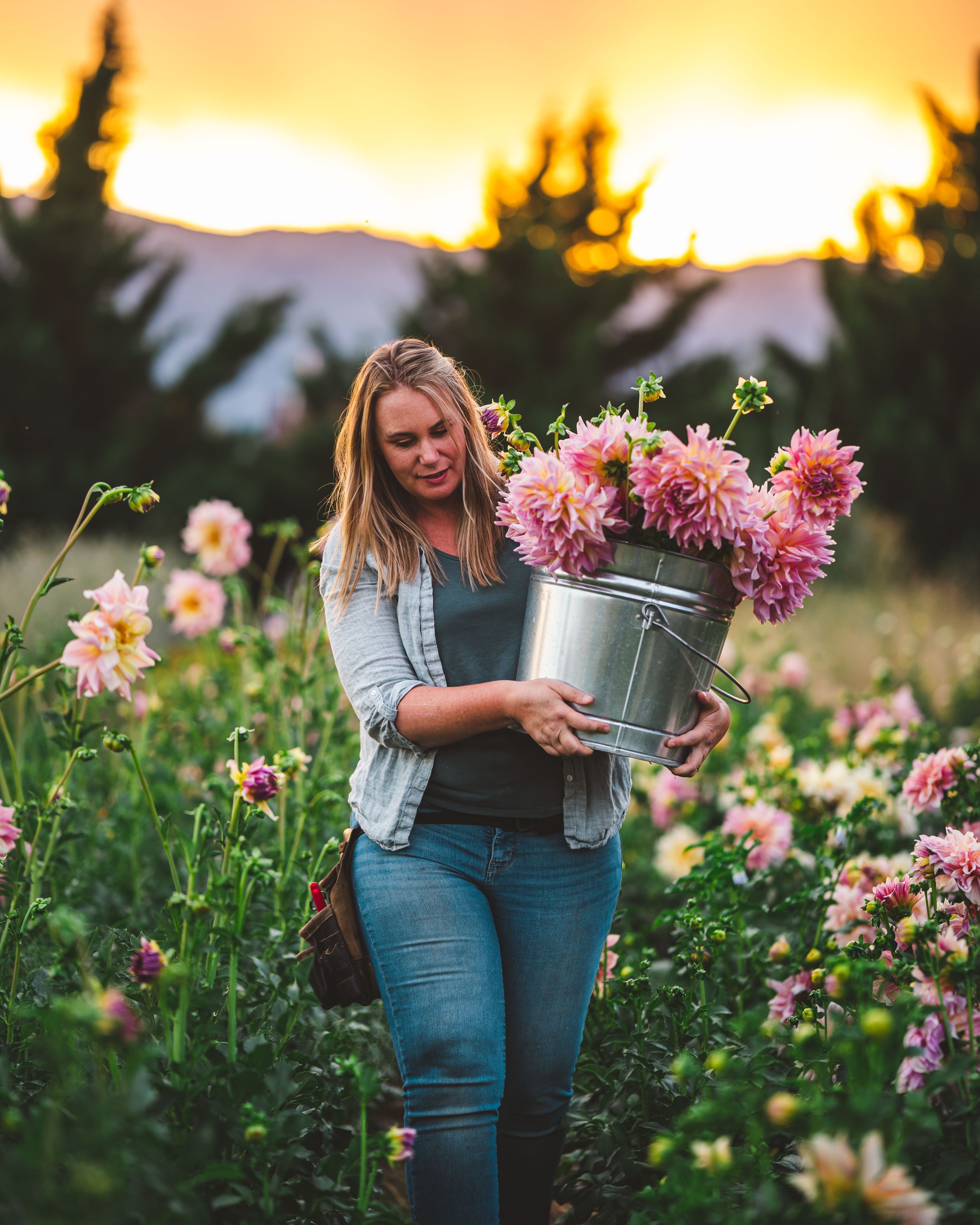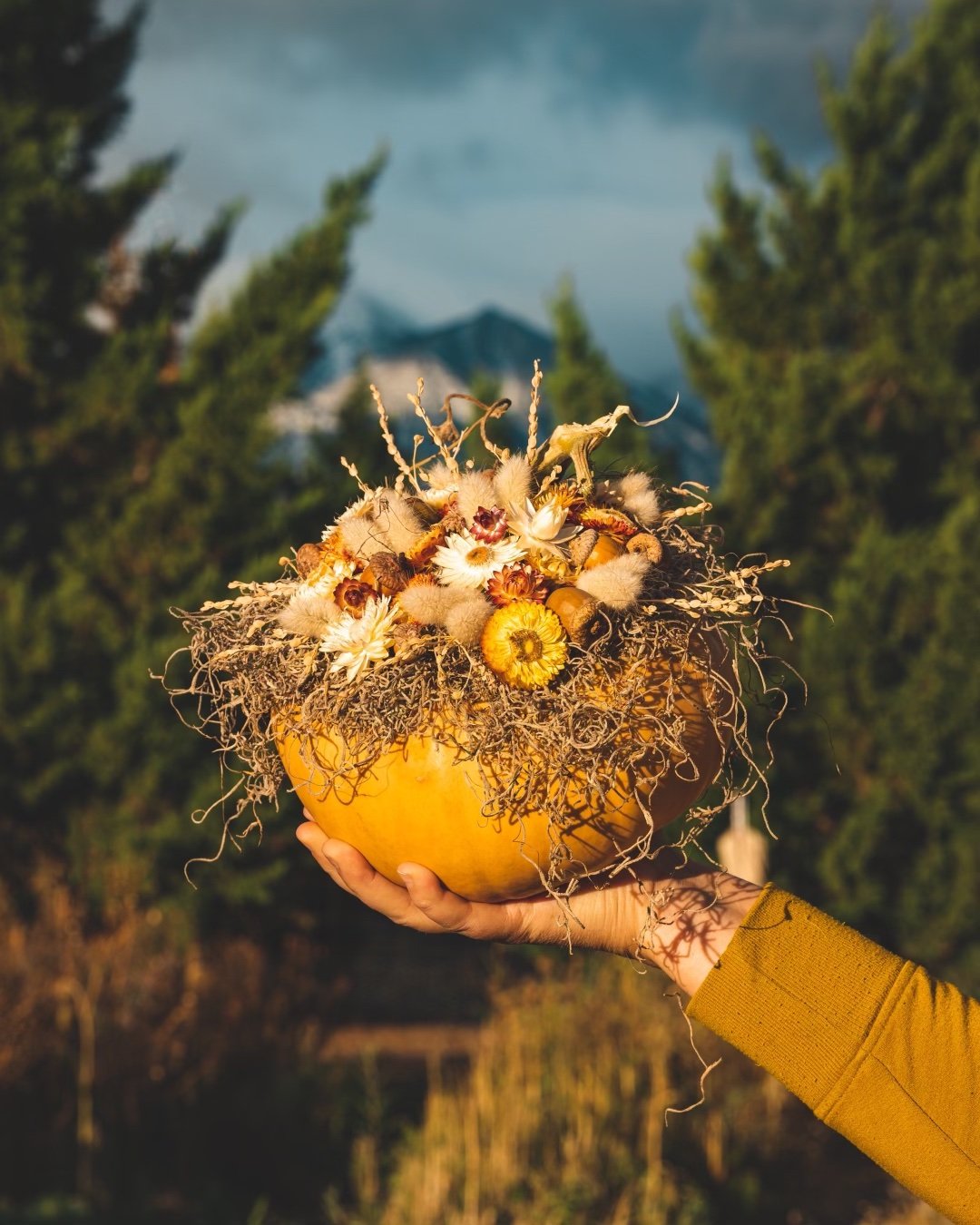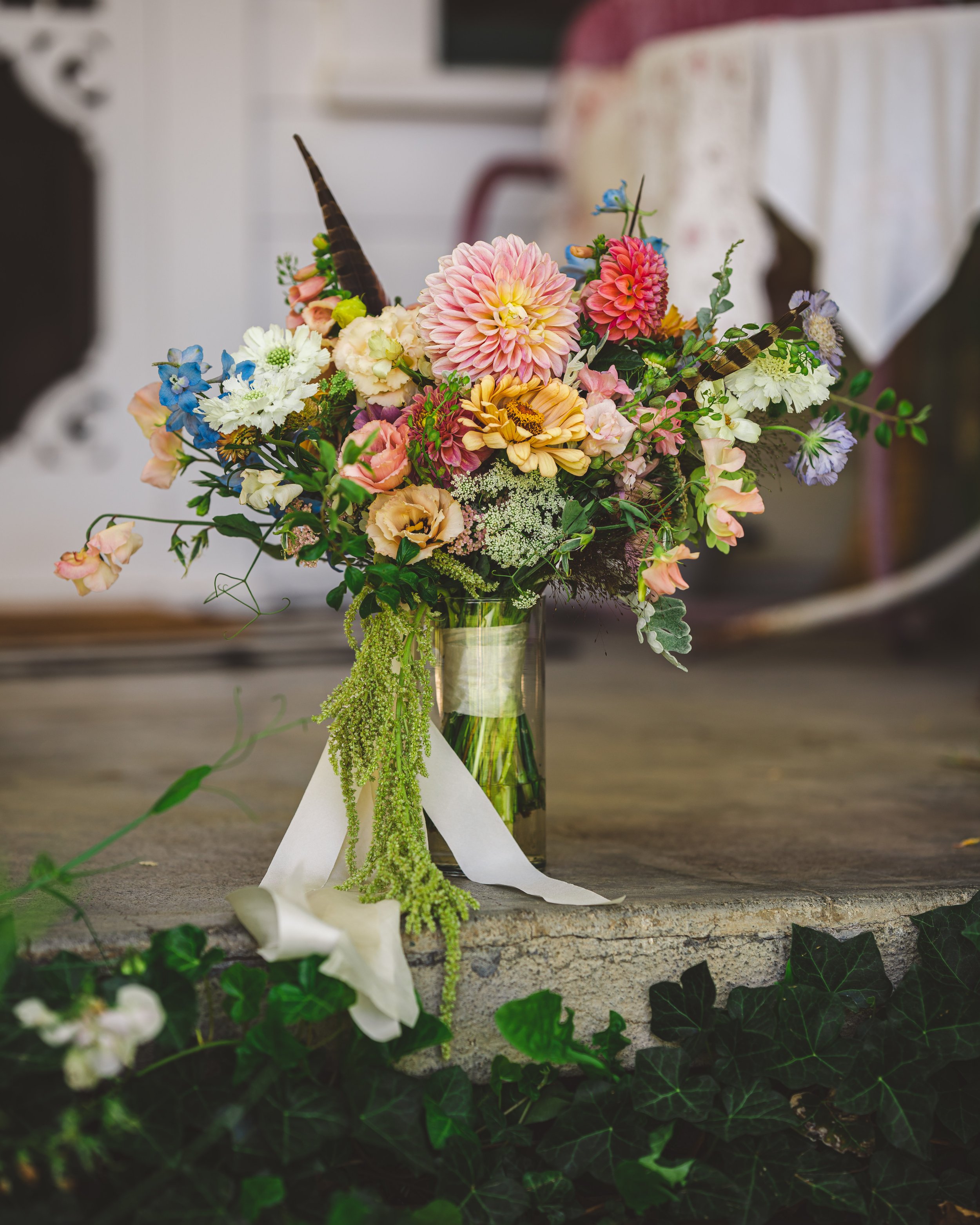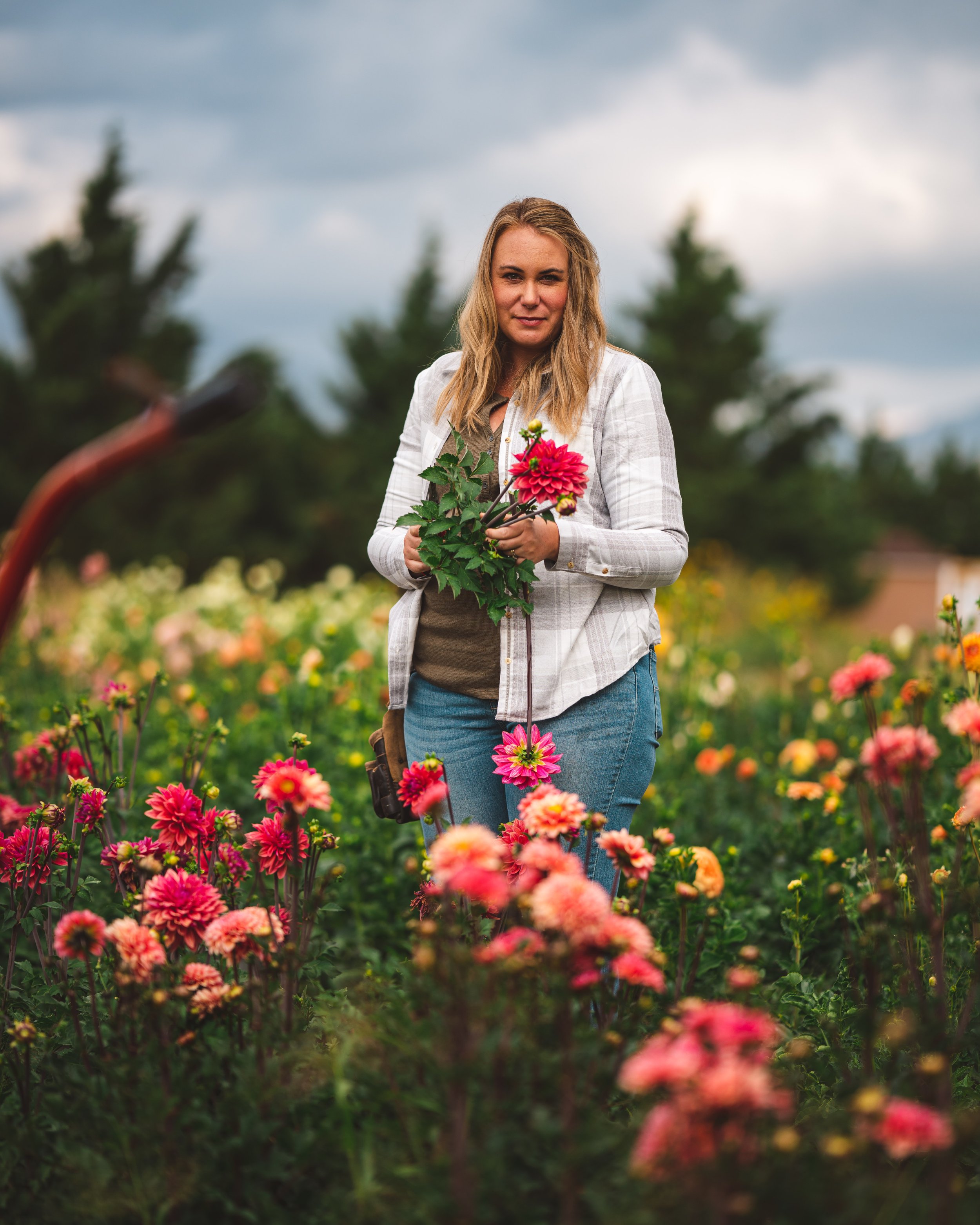Marketing for the Flower Farmer
The ever-elusive “marketing” topic is what we are tackling today!
I had to dust off the cobwebs of my brain to remember the basics of marketing that I learned back in college. Why cobwebs as an active business owner? The basics make a good foundation, but our tactics shift based on the feedback we get from our market.
I’m getting a little ahead of myself.
My goal with today’s post is to simplify marketing so we can more easily embrace it without feeling overwhelmed, confused, or discouraged. I will not claim to be a marketing guru by any means, which shows you don’t have to be one to market your flower farming business successfully.
We are going to go over the basics of marketing in this post:
What is marketing?
The four Ps of marketing
Target marketing
Personalized marketing
Different promotional strategies for the flower farmer
Promotional strategies to use sparingly or avoid
Buckle up because this is going to be a fun ride! No, seriously, marketing is pretty fun!
Basics of Marketing
Marketing may sound intimidating, but once you grasp the basics, you’ll realize that it’s not some big scary monster; rather, it’s your friend who will help snag sales for you!
The Oxford Dictionary defines marketing as “the activity or business of promoting and selling products or services, including market research and advertising.”
There’s a bit to unpack here.
To translate in simple terms, marketing is creating value for your customers, how you will bring awareness of your products and services in a way that will connect with your customers who will want to purchase from you.
Still with me?
Commonly, marketing comes down to “The Four P’s of Marketing.” These days, they have added more P’s to the pot, but to keep it simple, we will focus on the original four:
Product
Price
Place
Promotion
Usually, when people think of marketing, they jump straight to Promotion, which could be considered the last step.
Before you can promote a product, you must first have the product; that product should be priced and you should also have a place where your customers can purchase said product.
Let’s go over the Four P’s.
Product
Many newer flower farmers get hung up on the product: how can I sell the flowers when they aren’t in bloom?!
Hey, I get it.
Still, you already have your product in the works and should have a general idea of the product and how much you will offer.
Ideally, when creating a product, you want to provide value to your customer. This is what makes a good product that will sell.
What good can you provide to your customers that will bring them value and, in exchange, make them willing to pay you for it?
Mixed bouquets, custom designs, CSA offerings, U-Pick experiences, workshops, seed starts, etc. These are all various types of products. We cover selecting your product in our blog, The Importance of Deciding on a Product Before Crop Planning, which you can read here.
The product isn’t the flowers alone but also branding, packaging, and presentation.
As Will Rogers said, “[y]ou never get a second chance at a first impression.”
Let’s go over how essential a good first impression is.
The Importance of a First Impression
Regarding a flower farming business, your first impression is how you are coming out of the gate. It matters.
This begins with branding.
Beautifully or poorly packaged, fresh or wilted flowers make an impression. Your greeting, or lack of it, makes an impression. When new customers visit your booth or farm stand, they assess you, your product, your presentation, and your farm.
At best, you have seven seconds to make a good impression, but recent studies show more like milliseconds to make a positive impression on a customer. Using another business for a CSA pickup location will also provide an impression that the business is the first in-person contact with you and customers, especially new customers who haven’t met you in person yet. How your product is displayed and looks matter there too. If the flowers are wilted with your farm name, it won’t leave a good impression.
Thanks to the internet and social media, many customers first impression of you will be presented by your social media feeds or website, is your presentation beautiful, concise, informative and welcoming? These are all important factors to consider.
To learn more about branding and its importance, read our blog on Building Your Flower Farm’s Brand here.
Once you have your product figured out, it is time to determine its price.
Pricing
Oh, pricing!
Despite many asking me to cover this subject, I have tried to evade it for years. Pricing can be a whole blog in itself, today we’re going to keep it simple.
When pricing your flowers and services, take the rose-tinted glasses off of all the sweat and heart you poured into those blooms because it is going to come down to what customers are willing to pay.
I will confirm now: I see you and your hard work.
But now, it’s time to make sales.
Unfortunately, if we start bringing our emotions and hard work into the pricing equation, that single stem of dahlia should sell for $50!
You could attempt to sell that stem of Dahlia for $50, but would it sell?
Enter into the game of pricing.
There are some main areas to consider when pricing your products:
Cost of Goods
Competition
Consumer demand
Sales outlet
Marketing objectives
Location
Cost of Goods Sold
We’ve covered the importance of tracking the Cost of Goods Sold in various blogs. What was the cost (expense) that went into your product?
Some examples are the components, rubber bands, sleeves, stickers, commercial flower food packets, and vessels.
I’m not going to encourage you to go down to the cost of the stem to produce, but a broad brush of how much you invested in producing your cut flowers and the products from seed to centerpiece sold.
Here are the links to some blogs that go over bookkeeping and profit analysis, which cover the Cost of Goods Sold.
Competition
Looking at similar business models in your niche area is important. This will give you important “benchmarks” to determine where you land against your competitors and your business’s past performance—building historical and relevant data to determine which products and price points were profitable.
This will allow you to see how your pricing aligns with the industry standard, like a real estate agent looking at comparable houses to help you determine a fair, sellable, and highest price for which you could sell your home.
If you haven’t, performing a SWOT analysis could be a good idea at this point, too. It is an exercise where you analyze the Strengths, Weaknesses, Opportunities, and Threats of your competitors and your own business model. Doing this exercise may even open your eyes to a new product offering you didn’t realize had a wide opening for…
Consumer Demand
Is there a demand for the product you are offering?
The good news is that flowers are a high demand luxury item across the board, it may just come down to your product, price, place and promotion (hmmm… those four P’s again…).
This comes to doing market research. Perhaps run a poll on social media or ask around your community for relevant people such as event managers, florists, wholesale, potential customers, etc.
Demand versus supply goes back to Economics 101. If there is a demand but limited supply, you can demand a higher price for your product. If the demand is lower but the supply is higher, it will be difficult to demand a higher price.
For example, in a more rural area with avid hobby gardeners, you will find it difficult to sell “commonly grown” cut flowers. On the other hand, less commonly seen colors or varieties may give you the advantage not only to sell but demand a higher price.
Sales Outlet
Your product sales outlet also plays a role in pricing.
Do you have a brick-and-mortar storefront you’re selling at?
Are you selling at an event that costs you to attend?
Are you selling at the end of your driveway in your spare time?
Depending on the overhead cost of your sales outlet, you may have to charge more to make up for those fees.
Marketing Objectives
What is your main goal with your pricing? To increase awareness of your flower farm? To maximize profit? Do you have a ton of peonies and need to price to move?
Not every product or sale has the same objective, but it needs to be thought through.
Location
Location, location, and location play a huge role in pricing.
Pricing a product for serving an area like the Bay Area or Seattle will look much different than a rural town in the Midwest.
I don’t love being asked about my prices or what someone else should charge for their product. We are located in a rural area but it is a wealthy rural area with destination brides in Lake Tahoe and Bay Area retirees who are on a very comfortable fixed income, for the most part.
Our location also makes growing cut flowers more expensive. Accessible compost is incredibly expensive here, we are high altitude and have crazy temperatures swings which makes it so we need to have infrastructure and a lot of watering. Many items we need for growing need to be sourced online, driven out of the area, or pay incredibly high rates to get locally.
As layers of a garden rose, each element lay atop the other in creating a price for your products and services.
Using Stem Count, aka “Flower Math”
Suppose figuring out a price from scratch is too overwhelming; when in doubt, use the retail florist markup method. This is where you find the current flower pricing through a wholesaler, online or local, or using the Boston Ornamental Terminal Prices as guidance.
Once you have your price list, you can mark it up. A standard retail markup is 2 X the cost, which for selling a bouquet of flowers can be fair.
Once designing and planning become involved, such as in weddings, a markup of 2.5-3 X plus a percentage for your labor. For example, it is common for an event florist (including a farmer-florist) to count the stems of each flower and then mark it up. Once they have all the elements of the design penciled out and marked up, they will then account for the vessel's markup, purchased or rented, and then their percentage to account for labor, which is commonly 20-30%.
The nice part about this method is you can also work backward. For example, if a client has a budget, you can create a piece based on that budget. This requires spreadsheets and practice, but eventually, you will know, based on which container you are using, a mason jar or compote, how much, in general, it takes to fill it with a design.
As mentioned, pricing is a huge topic. It also comes down to trial and error regarding what pricepoint sells, but at a Goldilocks level, it is not overselling or not selling at all. It will also depend on how much product you are looking to move and how fast, whether you have cold storage to hold onto items or you need a quick turnaround, your design experience and level- all this comes into play with pricing.
Raising Current Prices
Everything has gotten expensive with inflation. You may be looking at needing to raise prices. In general, lowering prices is much easier than raising them. If possible, consider creating a product more aligned with your current pricing using Flower Math. If you still can’t make your current price profitable, increase prices slowly, staying within 2-7%.
Place
Place is going to be your sales outlet, where your products will be displayed, be able to be purchased and acquired.
This can be a physical location or it can be online. For us, even when we may be selling products in-person at a pop-up event or such, our “place” is ultimately our website. It is a consistent location where we can use our marketing to funnel customers to.
Your “place” should be good representative of your brand whether it is your own website, physical location or partnering up with another business.
To learn more about the various “places” that are common outlets for a flower farmer, read our blog on that below.
Promotion
Alas, we are at the final P of the Four P’s journey, which is the one where you are probably more interested in learning about PROMOTION!
Advertising, publicity, and selling!
Promotion is the final step of marketing, where you will bring awareness to what you are selling and funnel your customers to purchase it.
An incredibly important factor in promoting your product is doing it in a way that will entice customers to purchase from you.
Before promoting your product you must answer this question:
Why should they purchase from you?
When answering this question, I recommend keeping it in an uplifting, positive light. Tread lightly using emotion and avoid “soap-box” preaching as that may come across as negative to consumers. It’s like the sad music dog commercial that always plays. After a while, it just brings you down, or you become numb to it. Use playing on strong emotions such as sadness, righteousness, and empathy sparingly.
If you are at a loss as to why someone should purchase your flowers… walk your field.
Visit with your seedlings and your blooms early in the morning or at sunset. Take in the beauty. The answer to why customers should purchase from you is simple and lies in your field. Getting customers excited about emotion or a cause only carries you so far; a more sustainable approach is to connect with your customers in a positive and fulfilling way.
For example, instead of shaming imported cut flowers, focus on the positives of yours.
Promotion really comes down to connecting with your ideal customer and customers tend to connect and follow through with businesses and brands that make them feel good.
So, how do we reach our ideal customers? There are two approaches: Target and Personalized Marketing.
Target Marketing
Target marketing requires having an idea of who your ideal customers are. Your ideal customer doesn’t have to be cemented into your business model, but it is a starting point.
Target marketing can be broken down into age groups, genders, income levels, ethos, and location, to name a few categories.
For example, 98% of our customers are women, and the other two percent are boyfriends/fiancees/husbands/partners of women for whom they purchase flowers. Overall, our end product typically goes to women.
Our mixed bouquet offerings have a wide spectrum of ages, usually mid-twenties through senior. We live in a retirement community, and customers of many of our everyday products, such as mixed bouquets, are retired. We are in a wedding destination area, and many of our couple's ages range from twenties to thirties. Our customers are usually eco-conscious and enjoy specially grown and curated flowers.
Laying out your potential target market and researching the area, market, etc., where you want to sell is good practice.
Ultimately, though, target marketing is for bigger businesses. Truly, what we do is personalized marketing.
Personalized Marketing
Personalized marketing is adapting your marketing to your customers in real-time using data.
Whether we assess and respond through how a certain product is sold at the pricepoint, a sales outlet, or even just looking at the data through our social media accounts and website, we respond to our customer's needs, requests, and feedback. We then continued with what went successfully and dropped what didn’t.
What were the reactions of your customers?
Were you in the right sales outlet for your product and price?
This has also helped us better know which colors, varieties, and cultivars of crops sell best for us.
Take notes, just like in the field, for sales, too. How well did your dried flower wreaths sell at the fall craft show? Did attending give you any leads for other sales, such as picking up a business account to provide arrangements to or a new CSA member?
Crafting a story and nurturing a relationship through authenticity has become incredibly important. In a world where we hide our faces behind filters and avatars, we have found customers relish purchasing from us largely because of the authenticity of our personalities and products.
Now that you know the difference between Target and Personalized Marketing, it is time to figure out advertising.
Advertising
When we think “advertising,” glossy magazine ads, television commercials, and ads filling our social media feeds may come to mind.
Advertising is your opportunity to put forth the best version of your product and yourself to connect further, entice potential customers, and remind customers to come back to purchase from you.
Flowers evoke all of our senses: touch, scent, feel, and even taste- these four are hard to advertise when not in person with our customers, but flowers' special powers come down to their visual appearance. This goes in our favor when advertising to customers. Capturing video and photos of your flowers growing, in bloom and finished products is necessary, capturing it well and consistently is even more advantageous.
When advertising, you need to show or describe your product offerings and cost and funnel them to where they can purchase from you. This should be done concisely and legibly with corresponding photos.
When it comes down to advertising there’s paid advertising and then organic advertising. In my opinion, organic advertising is much more powerful.
Paid Advertisements
Paid advertising is where you are spending money to run an advertisement. This can be as simple as an Instagram, Facebook, or Google ad that you place a reach and budget. It can also be a more traditional approach where an ad is run in a magazine, local paper, or even sponsoring an event or sports team. Many of those allow you a print option and online advertisement.
Organic Advertisments
Have you ever looked at your website or social media analytics and found that it says “organic reach”? This means that people found your content on their own.
If you can reach your customers organically, not only is it more gentle on your pocketbook, but often, it also goes further with them. This circles back to the idea of connecting with your customers in a positive, authentic, genuine way.
This can be done by posting quality content on your social media feeds and interacting with followers. Use hashtags relevant to your geographical location, products, and service offerings.
Ultimately, SEO (Search Engine Optimization) is an incredibly formidable tool that ties your online presence together with social media accounts, online mentions and articles, and your website with relevant keywords. Having a blog and Pinterest can also help increase your SEO. SEO makes having a website invaluable, as it allows you to funnel potential customers to you. When a customer “finds” you without seeing a sponsored ad, we have found that they have already begun to feel connected to your brand and messaging, like they found a hidden gem. We have seen this, especially with wedding clients.
Some other ideas to organically advertise to your current or potential customers:
Flyers at businesses that your ideal customers’ patron
Write articles for your local newspaper
Interview with local television or internet stations
Speaking engagements
Collaborate/Networking with other like-minded and relevant businesses
Signage pointing to your farmstand or U-pick
In-person events such as pop-ups, craft fairs, wedding fairs or farmer’s market
Lastly, our number one advertising tool is email campaigns. This list has been built up over the years by always having a sign-up sheet with us at every pop-up and farmer’s market and taking signups on our website. Mailchimp, Constant Contact, or we use the one that is integrated with our website host. We find this by utilizing email campaigns. We sell a majority of our products or spaces within 48 hours.
There is a lot of spokes on the wheels of marketing. The most important thing is to bring value to your customers and make aunthentic connections that will build trust. Building trust is one great reason to remember for you to step in front of the camera once in a while to be the face of your business. It makes it more personal, which makes a customer’s supporting your small flower farming business more meaningful to them.
You got this!
Until next time, we are looking forward to helping you hand blooms soon!
- Jessica & Graham












